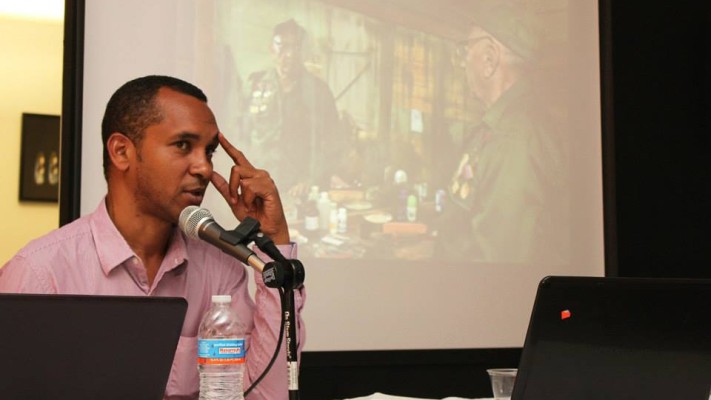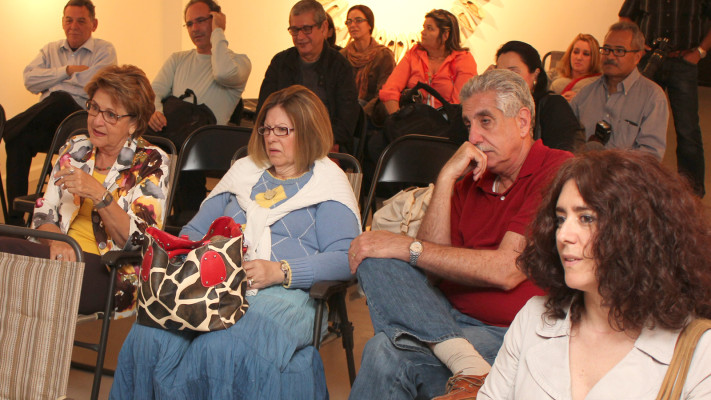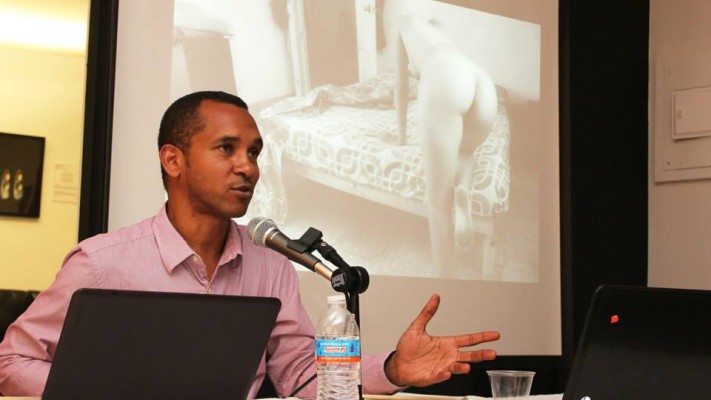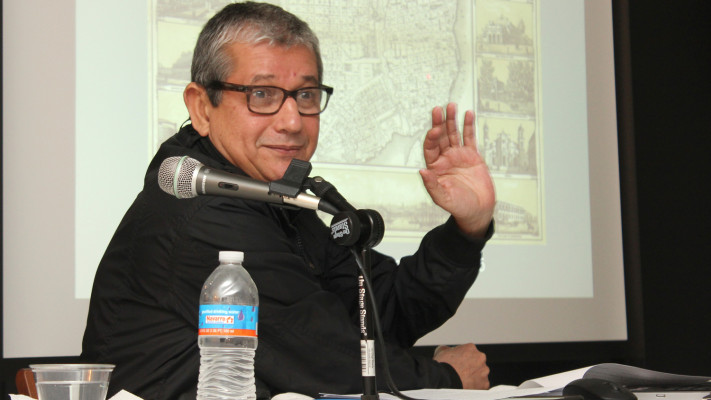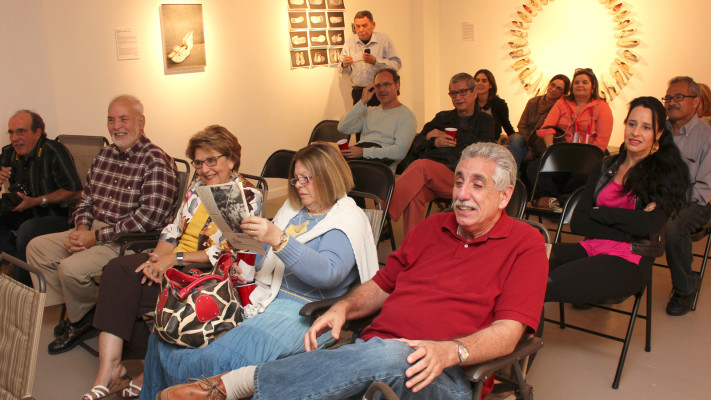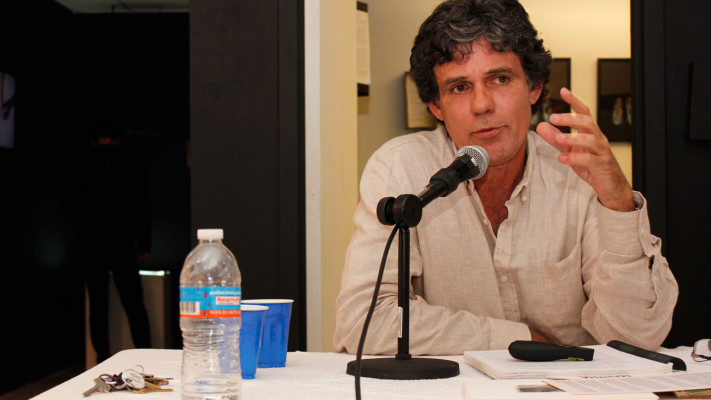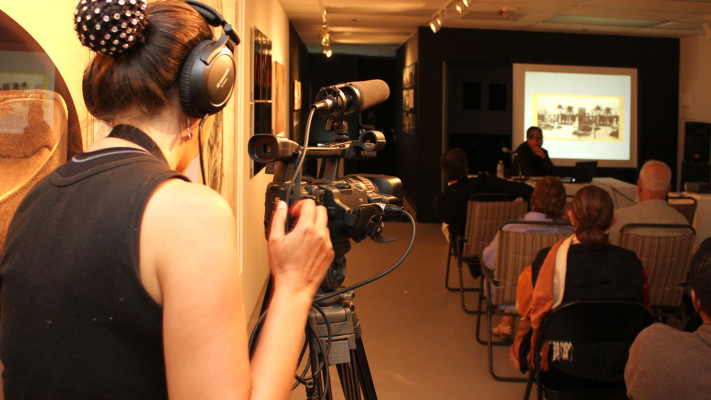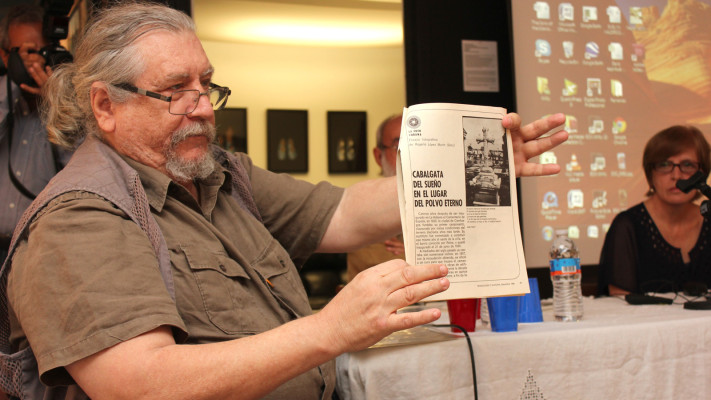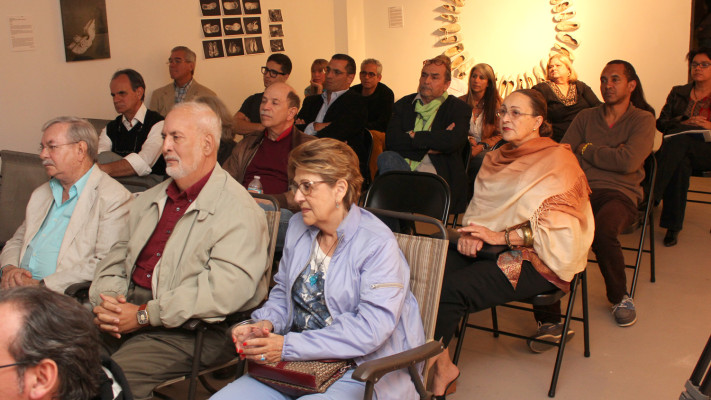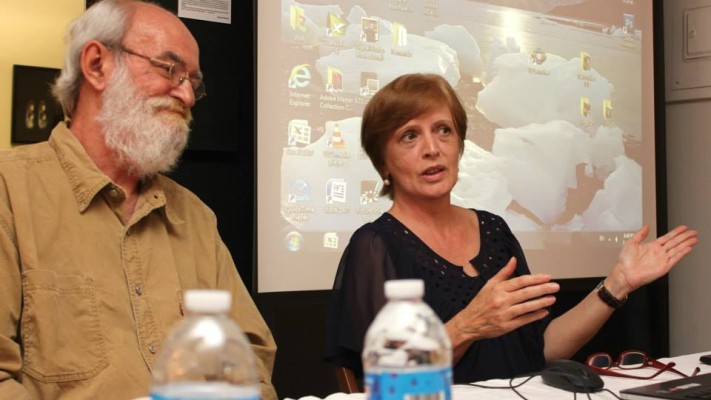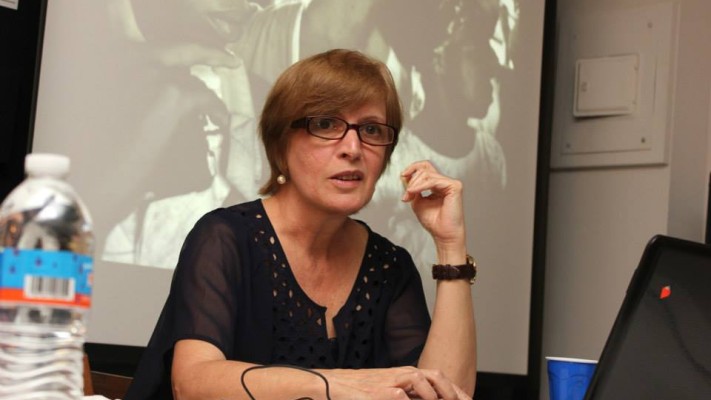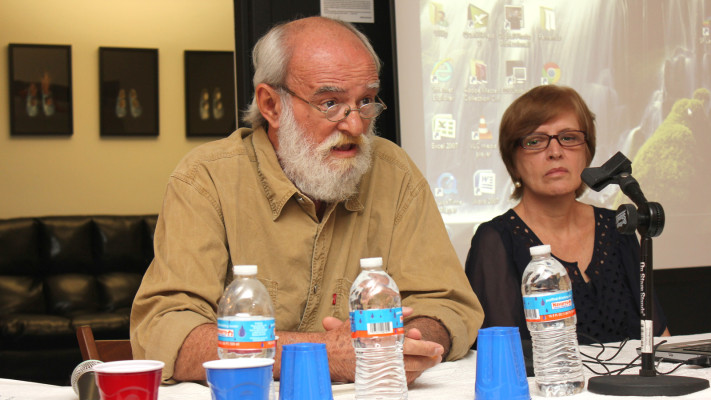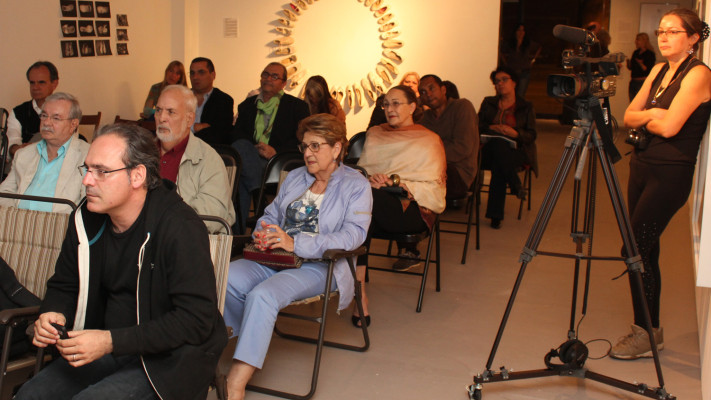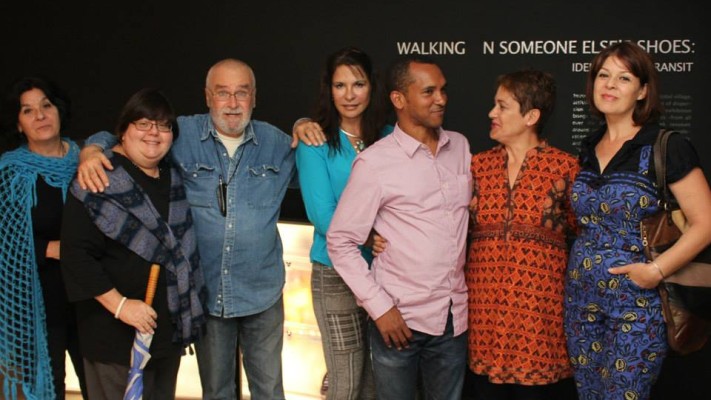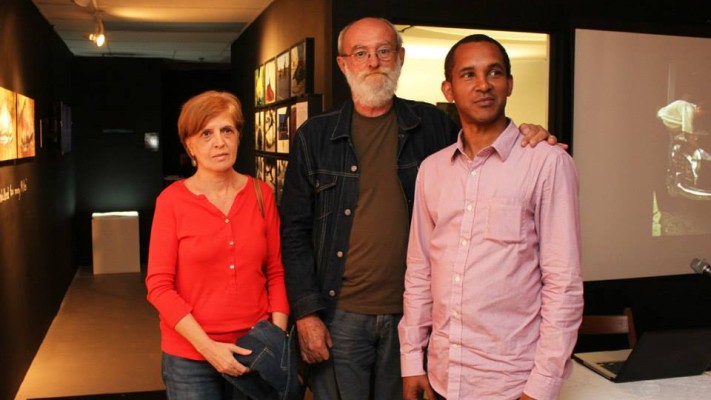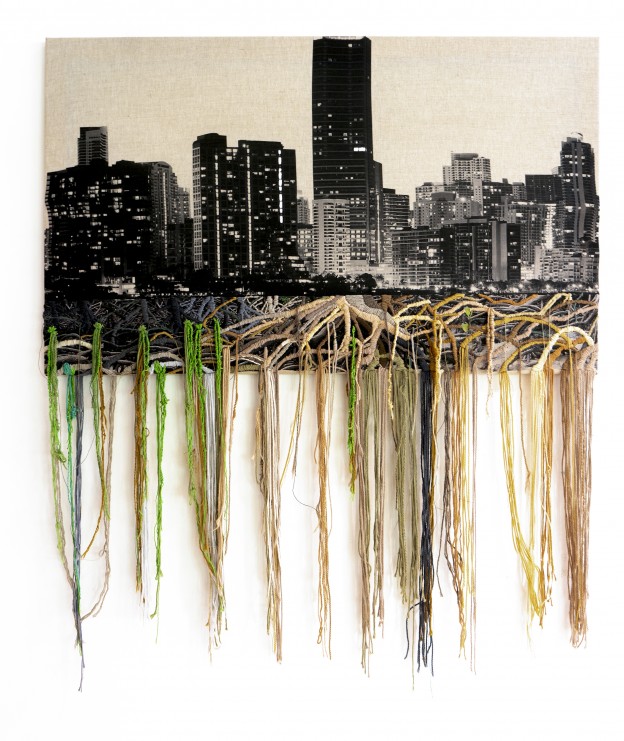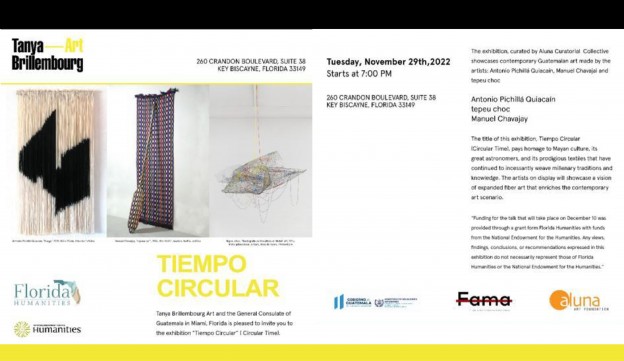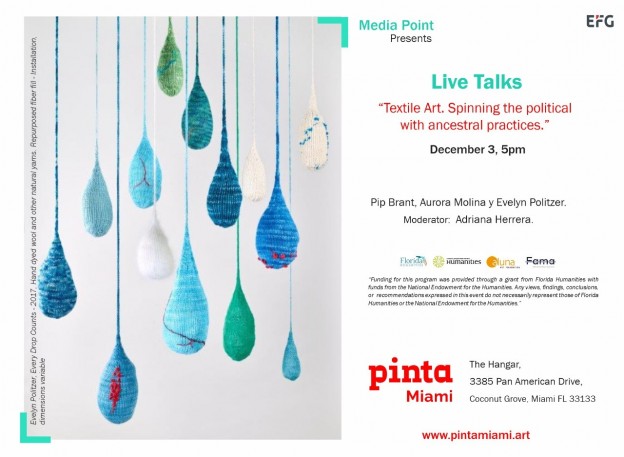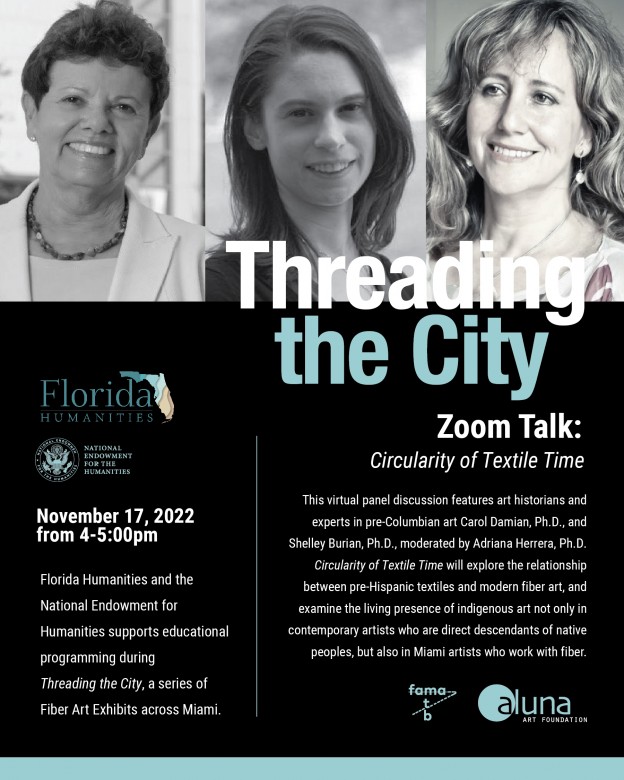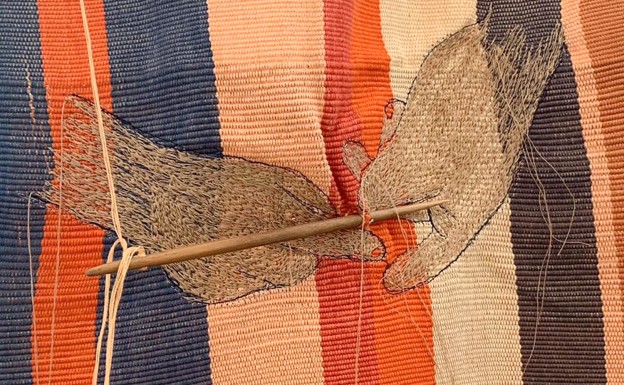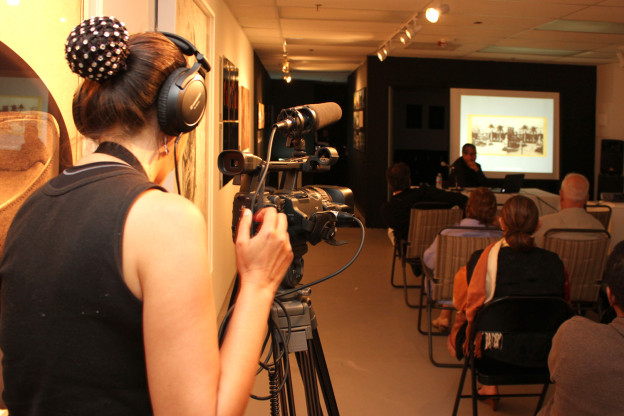
ART, DOCUMENT AND REALITY: REFRACTIONS ON PHOTOGRAPHY IN CUBA (History, Theory and Criticism)
Aluna Art Foundation and Focus Locus cordially invite you to the first of a series of lectures on photography, to be celebrated on March 2014. Titled “ART, DOCUMENT AND REALITY: REFRACTIONS ON PHOTOGRAPHY IN CUBA (History, Theory and Criticism), the cycle will count with the participation of leading critics, curators, art historians, and artists, who will discuss several issues related to the practice of photography in Cuba. In future editions, Aluna Art Foundation will extend these cycles to other topics and countries, trying to cover various interests on contemporary photography. Scheduled conferences are as follows:
Thursday 06/03 at 7:00 pm
“SINCE THE WHORES HAD GONE: URBAN SPACE, EROTICISM, DOCUMENT AND POLITICS “| A conversation about Cuban photography of the 90’s by Juan Antonio Molina; critic, researcher and photography curator.
Friday 13/ 03 7:00 pm
“HAVANA IN 1860: PHOTOGRAPHS BY GEORGE N. BARNARD” |A lecture by José Antonio Navarrete; art critic, researcher, and photography curator.
Saturday 20/03, 5:00 pm
“ART & PHOTOGRAPHY: AN EDITORIAL EXPERIENCE”| An open talk with art critic Aldo Menendez and photographers Rogelio López Marín (Gory), Ramón Martínez Grandal, and Gilda Pérez
Saturday 27/03, 5:00 pm
“HABEAS CORPUS: NUDE IN CUBAN PHOTOGRAPHY (1982-1993)”. A lecture by Willy Castellanos Simons; art historian, curator and photographer.
About the lectures
1. “SINCE THE WHORES HAD GONE: URBAN SPACE, EROTICISM, DOCUMENT & POLITICS”
“Since the whores had gone” is the title of the book in process that brings together newspaper articles, essays, and chronicles, written during the last 20 years by Juan Antonio Molina on contemporary Cuban Photography. The book will also include subjects as the representations of urban space, the relationship between photography and poetry, body, fiction, staging, and the different alternatives of what the author called “New Documentary in Cuba”. Parallel to these reflections, the essay opens a space on identity and rootlessness, aesthetic utopia and political disenchantment, as well as memory and the recent national history.
Art critic, professor and independent curator, Juan Antonio Molina was a researcher and curator for the Fototeca Nacional de Cuba and for the Wifredo Lam Center – which organizes the Havana Biennial. In Mexico he was a contributor to the Fototeca Nacional of the Instituto Nacional de Antropología e Historia, and for the Centro de la Imagen of the Centro Nacional de las Artes. In 2009, he was the coordinator of the XIII Bienal de Fotografía of Mexico, organized by the Centro de la Imagen and the Centro Nacional de las Artes. Between June and December 2009, Molina was the coordinator of the Seminar of Contemporary of the Centro de la Imagen.
2. “HAVANA IN 1860: PHOTOGRAPHS BY GEORGE N. BARNARD”
Commissioned by the New York E. Anthony publishing company, American photographer George N. Barnard (1819-1902) travels to Cuba in 1860 with the aim of making a long series of stereoscopic views. Upon his return, the company published its images under the title “Scenes in Cuba”, which was at this time, the most extensive series of photographs taken in Cuba and the first important visual documentation of Havana.
A researcher, critic and independent art curator, Jose Antonio Navarrete develops in Miami the ArtMedia Gallery curatorial project, located in Wynwood. He has published over three hundred articles in exhibition catalogs, scholarly publications, cultural magazines and newspapers from various countries, including Bolivia, Brazil, Colombia, Cuba, Chile, Ecuador, Spain, United States, Guatemala, Mexico, Dominican Republic, Uruguay and Venezuela. He also has published several books, including “Ensayos desleales sobre fotografía” (Venezuela, 1995), “Vecinos. Fotografías de Fernando Zapata” (Ecuador, 2003), “Fotografiando en América Latina. Ensayos de crítica histórica” (Venezuela, 2009) and “Julio Zadik, un fotógrafo moderno en Guatemala” (Guatemala, 2009). Navarrete is a regular contributor to the “Arte al Dia International” magazine.
3. ART AND PHOTOGRAPHY: AN EDITORIAL EXPERIENCE
Which photographic magazines existed in the Cuba of the 80s, and to which publishing challenges did they face in a country where press belongs to the State and power relations control the contents?
Aluna Art Foundation has assembled a group of professionals that have worked during those years in ‘Revolución y Cultura’, one of the magazines that periodically dedicated a space to author’s photography. They will debate in an open talk with the public their experiences, in a decade marked by aesthetic renovation and the questioning of the utopic representation as an artistic and media paradigm. With the participation of Aldo Menéndez (Artistic Director, ‘Revolución y Cultura’), Rogelio López Marín (Staff Photographer), Ramón Martínez Grandal (Staff Photographer), and Gilda Pérez (Invited Photographer)
ALDO MENÉNDEZ: A multifaceted artist and intellectual, Aldo Menéndez is one of the pioneers of photorealism in Cuba and played a key role in the development of Latin American serigraphy art. He is the founder of the Taller Portocarrero of Havana. In 1972 his paintings and drawings were incorporated into the permanent collection of the National Museum of Fine Arts of Havana. In the 1980s, he was part of the Plastic Arts Assessment Board and the assessment boards of the aforementioned National Museum and the Wifredo Lam Center. During this same period, he was recognized as a Founding Member of the Cuban National Commission Fund for Acquisition, Assessment and Authentication of Cultural Property, institution where he reached the position of Assistant Director of Artistic Creation.
ROGELIO LÓPEZ MARÍN (GORY): Gory has a Bachelor of Fine Arts in Painting from the National School of Art in Havana. He took a Photographic and Graphic Design course under the tutorial of the Cuban artist Raúl Martínez and has a Master of Art History from the University of Havana. Gory’s work can be found in public collections including the Metropolitan Museum of Art, 20th Century Art Permanent Collection, New York, NY (painting), LACMA (Los Angeles Museum of Art) permanent collection, CA (photography), The Corcoran Gallery of Art (Corcoran’s Permanent Collection of Photographs), Washington, DC, the Museum of Contemporary Photography, Columbia College, Chicago, IL, the Museum of Fine Arts, Houston, TX, the Museum of Art Fort Lauderdale, FL, MAM (Miami Art Museum), Miami, FL, Centro Wilfredo Lam, Havana, Cuba (photography), Museo Nacional de Bellas Artes, Havana, Cuba (painting and photography).
RAMÓN MARTÍNEZ GRANDAL: Realiza estudios de Artes Plásticas y Museología. Comienza su carrera fotográfica en 1970. Participa en más de 60 exposiciones colectivas en Cuba, Venezuela, México, Brasil, Estados Unidos de América, Francia, Italia, Alemania, España, La India, Hungría, La India. Cabe mencionar la exposición Canto a la Realidad, Fotografía Latinoamericana desde 1860-1992, Casa de América, Madrid, España y Un mundo, varios puntos de vista: MagnumPhotos y Fotógrafos Notables de Venezuela, Museo Jesús Soto en Ciudad Bolívar y Museo Alejandro Otero en Caracas. Realiza exposiciones individuales en Cuba, Venezuela, Francia, España y Suiza donde se destaca Cuba, 1933-1992, Dos visiones: Walker Evans-Ramón Grandal, Burdeos, Francia. Sus fotografías forman parte de diversas colecciones públicas y privadas. Ejerce la docencia desde 1996 hasta la fecha en diferentes escuelas y universidades de así como en talleres.
GILDA PÉREZ: Realiza estudios de Artes Plásticas y de Historia de Cuba. En 1978 comienza su carrera fotográfica. Participa en numerosas exposiciones colectivas en Cuba, México, Brasil, Venezuela, Estados Unidos de América, Italia, Alemania, España, Hungría, La India, etc. Cabe mencionar la exposición Canto a la Realidad, Fotografía Latinoamericana desde 1860-1992, Casa de América, Madrid, España y Un mundo, varios puntos de vista: MagnumPhotos y Fotógrafos Notables de Venezuela, Museo Jesús Soto en Ciudad Bolívar y Museo Alejandro Otero en Caracas. También realiza exposiciones individuales en Cuba, Venezuela, Canadá, España y Suiza. Sus fotografías forman parte de diversas colecciones públicas y privadas .Ejerce la docencia desde 1996 impartiendo talleres en Cuba, España y Venezuela.
4. “HABEAS CORPUS: NUDE, IDEOLOGY AND IDENTITY IN CUBAN PHOTOGRAPHY (1982-1993)”
After two decades of being absent in the galleries of the island (1959-1982), the Nude reappears as a theme and exercise of photographic exploration. The experiences varied from the composite and aesthetic work, to the ideological deconstruction of the foundation paradigms of Post–Revolutionary Photography. Nude served as a vehicle for the critical revision of major social discourses, establishing new stories about the identity of gender, the racial problematic, the sexual orientation and the qualification of the private space in terms of authorial ideology.
Willy Castellanos is an art historian, curator and photographer, holder of a degree in History of Arts from the University of Havana (1993) were he graduated with a thesis on photography: “Nude as Objet and Strategy in Cuban Photography (1982-1993”. In Miami, Castellanos was the curator of the photography exhibition “Prayers for Saints and Orishas” at the Spanish Cultural Center of Miami (CCE), and the co-curator of several exhibitions with Aluna Art Foundation and the Focus Locus project dedicated to contemporary photography. His writings have been published in the magazines Fotomundo (Buenos Aires), Revolución y Cultura (Havana), Alante Magazine/The Sun Sentinel (Broward, FL), Arte al Día International, LetraUrbana.com and Nagari Magzine, as well as in several exhibition catalogs in the United States. Castellanos is the co-author of the critical essay for the book of Cuban photographer Raúl Canibano published by La Fabrica (Madrid, 2012); and is currently working on the publication of two books on Cuban contemporary photography.



